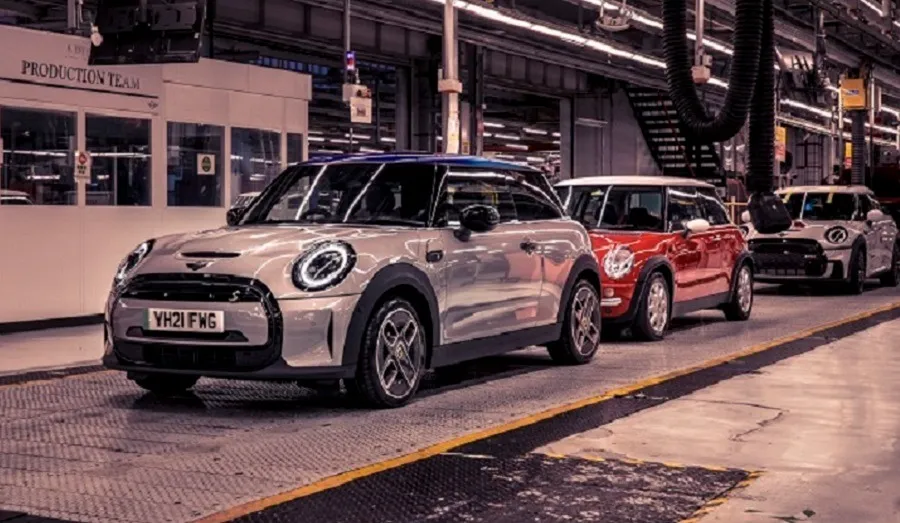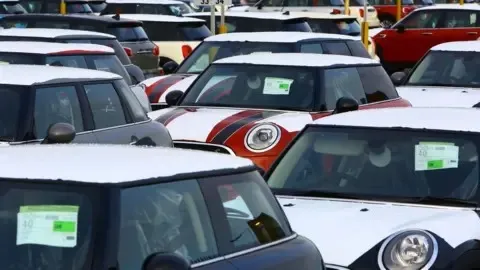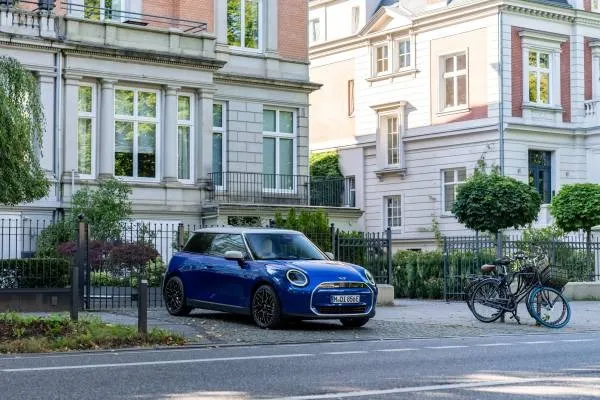Mini customers are faced with an important decision when considering the new Cooper: opting for a next-gen example of the brand’s classic hatchback sourced from the UK or the more expensive, hi-tech option made in China. The latter isn’t a discount pick; instead, it stands out due to its electric capabilities, developed under a joint venture with Great Wall Motors. Meanwhile, the petrol-powered versions come from Mini’s traditional Oxford plant in England.

Mini’s designers have ensured that both versions look and feel like a modern Mini. Although tough to distinguish from a distance, both models share the same headlights, tail-lights, and basic shape. However, the electric version is a few centimetres longer, maintaining a sharp, compact, and cute appearance with taut surfaces.
Both cars boast an interior that epitomizes modern design and a tribute to the classic Mini Cooper. Shaped by an ethos of “charismatic simplicity,” the cabin trades clutter for a handful of beautifully finished elements, highlighted by an exquisite circular screen in the centre of the dashboard. This screen offers crisp looks, fast responses, and a level of customisation previously unseen, with preset themes accompanied by soft ambient lighting that meets the driver’s mood. Users can also replace the standard graphics with favorite pictures, allowing colors to flow across a dashboard trimmed in textured woven material.

Innovative features include “augmented reality” sat nav with a live video feed of the road ahead and a selfie “camera” for recording photos and videos from road trips when parked. A subtle head-up display projects the speedo and other information directly in front of the driver. The cabin, surprisingly spacious upfront (though rear accommodation is cramped) and beautifully finished, may be the most impressive interior in a car for less than $100,000. Five toggles under the screen include a twisting, key-like switch to start the car.
Pricing and performance vary across models. The standard Cooper, starting from about $47,000 drive-away, features a 1.5-litre three-cylinder engine, producing 115kW and 230Nm, reaching 100km/h in 7.9 seconds with a fuel consumption of 6.0L/100km. The sportier Mini Cooper S, available from about $55,000 drive-away, has a 2.0-litre four-cylinder engine delivering 150kW and 300Nm, achieving 100km/h in 6.6 seconds with a fuel consumption of 6.3L/100km. Both combustion-powered cars drive the front wheels through seven-speed dual-clutch automatic transmissions.

For those ready to transition to battery power, the Cooper E costs about $60,000 drive-away, featuring a 135kW motor with a 41kWh battery offering a claimed 305 kilometers of range. The Mini Cooper SE, priced around $65,000 drive-away, upgrades to a 160kW motor and a 54kWh battery, providing 402 kilometers of range. Performance of the electric models is on par with their petrol counterparts, with the Cooper E reaching 100km/h in 7.3 seconds and the Cooper SE in 6.7 seconds. Both electric versions drive the front wheels through single-speed transmissions and can charge from zero to 80 percent of battery capacity in about 30 minutes.
The electric Coopers, designed for urban use or as a second car in a multi-vehicle family, deliver a driving experience expected of an electric Mini. Fast steering and stiff suspension provide real agility, though at a cost to ride refinement on rough roads. The electric models respond urgently to throttle inputs, true to the Cooper S badge, with a fun synthesised soundtrack amplifying Mini’s “go-kart” character.
While many may opt for the electric models, keen drivers might prefer the petrol Cooper S. Lighter and sharper, with less inertia to dull wheel and pedal inputs, it feels closer in nature to the original Mini.
